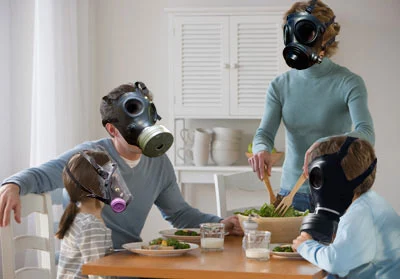Table of Content
Easy habits to bust the everyday dust that gathers in your home
Various everyday pollutants can enter your home through different means. Some pollutants are carried in by the wind, while others are unknowingly brought in by you.
"A lot of things come into our homes on our clothing, including pollen and cat allergens," says Elliott Horner, PhD, lead scientist for UL Environment (Underwriters Laboratories). Other pollutants originate inside the home, such as when you pet your dog and release dander into the air or burn a piece of toast, sending smoke streaming into the kitchen. According to Horner, it's challenging to avoid generating indoor air pollution in your home.
To eliminate impurities, you need to adopt multiple strategies. Follow the checklist below to help reduce indoor air pollution.
1. Open Windows
Ensuring proper ventilation is crucial for maintaining healthy indoor air quality. Opening windows, when the weather permits and pollen levels are low, is a simple way to facilitate effective exchange between indoor and outdoor air.
2. Ban Smoking
"Strictly avoid exposure to cigarette smoke," advises Dr. Norman Edelman, senior scientific adviser for the American Lung Association. Secondhand smoke adversely affects respiratory health and is accountable for approximately 3,000 lung cancer deaths annually in nonsmokers, as reported by the Environmental Protection Agency.
3. Give Your Pets a Bath
If you have pets, bathe them and wash their bedding often to reduce allergy-causing dander. And we hate to break it to you, but you should also keep them out of bedrooms.
4. Use Exhaust Fans
Operate fans in the kitchen to eliminate cooking fumes and in bathrooms to dispel steam. Ensure that your dryer vents outside to reduce lint. On days when opening windows is not feasible, use the fan setting on your window air conditioner with a clean filter to lower pollen levels in the air.
5. Put Down a Doormat
Wiping shoes can reduce pollutants carried into the house. Better yet, establish a shoes-off policy.
6. Change Filters
If you have a forced-air heating and cooling system, change the air filters more often when there's more smoke or pollen in the air.
7. Skip Fires
Flames dancing in a fireplace look delightful, but they release soot and smoke into the air.
8. Don't Cover Up Odors
Avoid air fresheners, scented candles, incense, and other odor-masking fragrances, which can trigger asthma.
9. Vacuum Often
Do this especially if you have a pet. Brooms can just stir up more dust.
10. Use a Microfiber Dusting Cloth
It will capture more dust than a cotton rag.
11. Minimize Carpeting
It can trap pollutants such as dust mites, pet dander, mold spores, and other dirt and dust. Choose hard-surface flooring instead.
12. Try to Stay Dry
To reduce mold, keep moisture down by using a dehumidifier and cleaning the filter regularly.
13. Store Chemicals Safely
Store solvents, glues, and pesticides away from living areas. And when possible, use homemade cleaning products, such as a mixture of white vinegar and water.
14. Try an Air Purifier
While an air purifier alone may not eliminate all impurities in your indoor air, if you've taken steps to keep allergens and pollutants out, using an air purifier can further reduce them. Running an air purifier in the bedroom of a child with asthma won't hurt and might provide some benefit.
Also Read: Air purifiers, Rest in Peace; these cost-effective curtains can tackle pollution.







_1767164061.webp)


Ans 1. Air pollution is contamination of the indoor or outdoor environment by any chemical, physical or biological agent that modifies the natural characteristics of the atmosphere. Household combustion devices, motor vehicles, industrial facilities and forest fires are common sources of air pollution.
Ans 2. Vehicle emissions, fuel oils and natural gas to heat homes, by-products of manufacturing and power generation, particularly coal-fueled power plants, and fumes from chemical production are the primary sources of human-made air pollution.
Ans 3. Common Air Pollutants They are particulate matter (often referred to as particle pollution), ground-level ozone, carbon monoxide, sulfur dioxide, nitrogen dioxide, and lead.
Ans 4. What is Air Pollution? Air pollution refers to any physical, chemical or biological change in the air. It is the contamination of air by harmful gases, dust and smoke which affects plants, animals and humans drastically. There is a certain percentage of gases present in the atmosphere.
Ans 5. The common air pollutants are: Particulate matter (PM10 and PM2. ... Ozone (O3) Nitrogen dioxide (NO2) Carbon monoxide (CO) Sulphur dioxide (SO2)